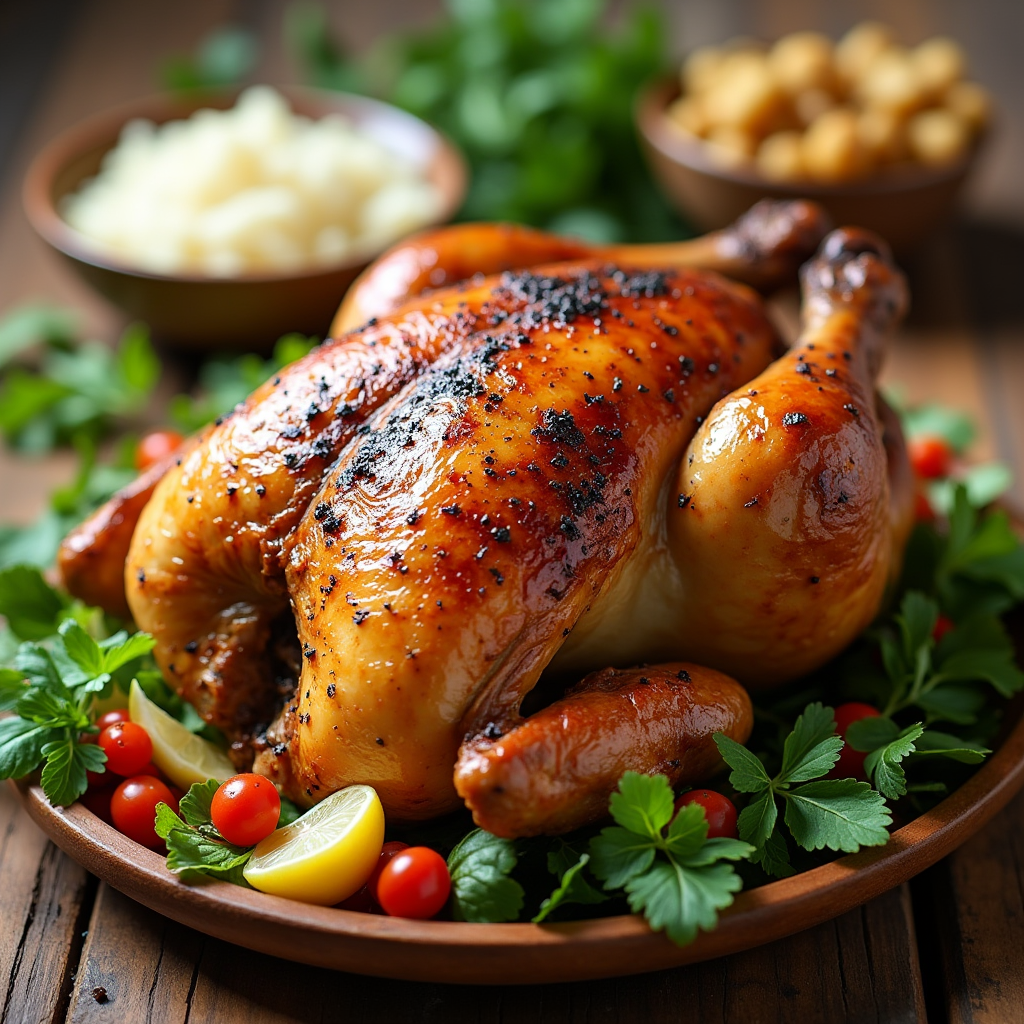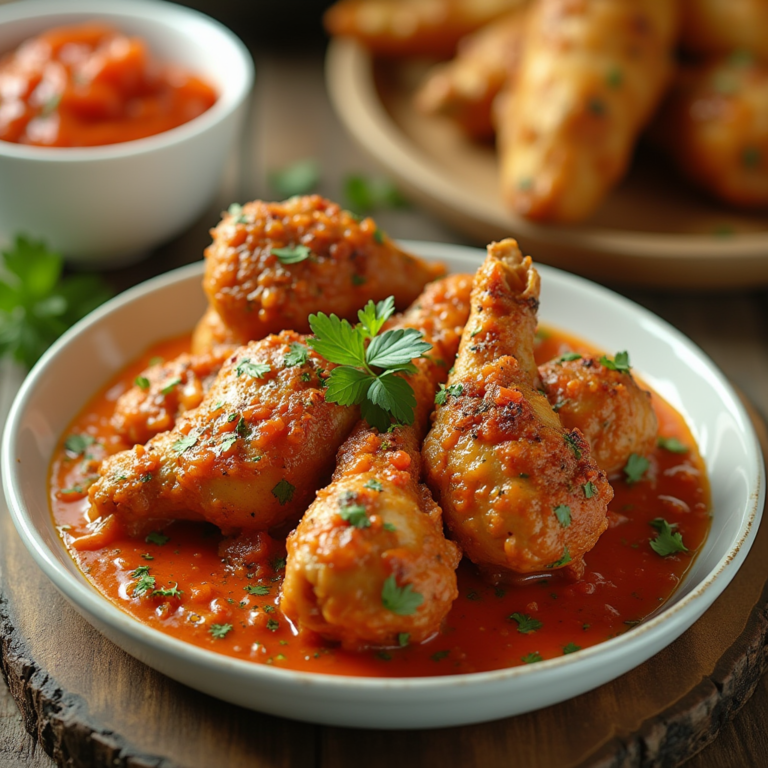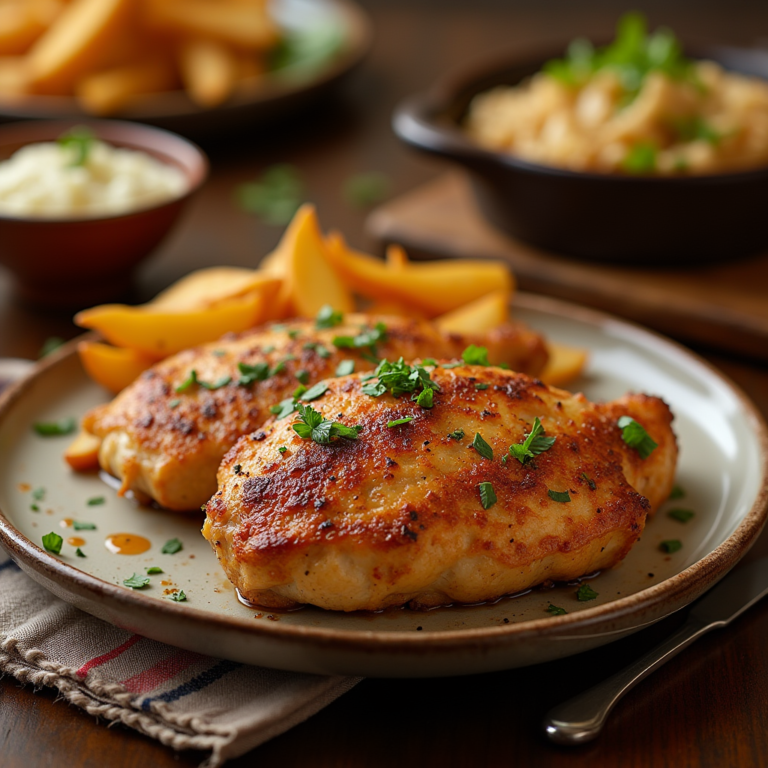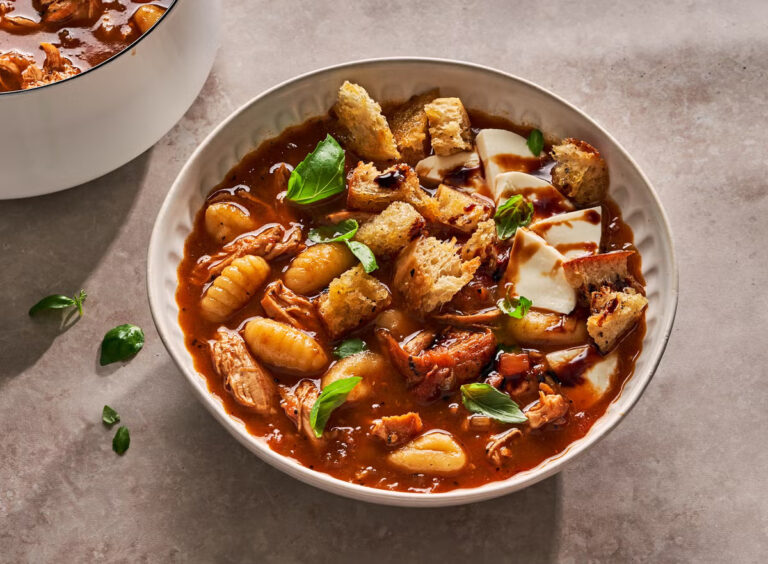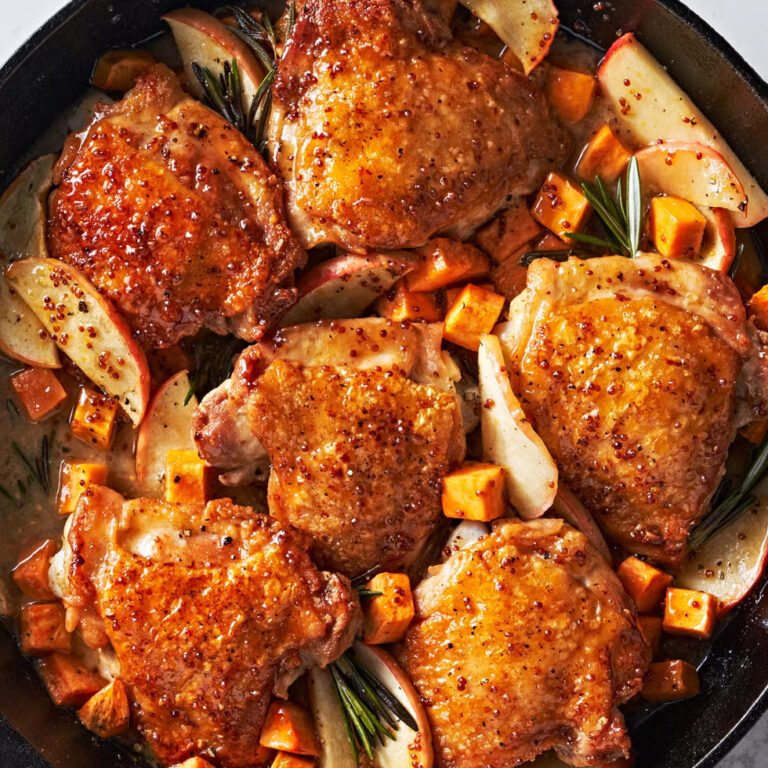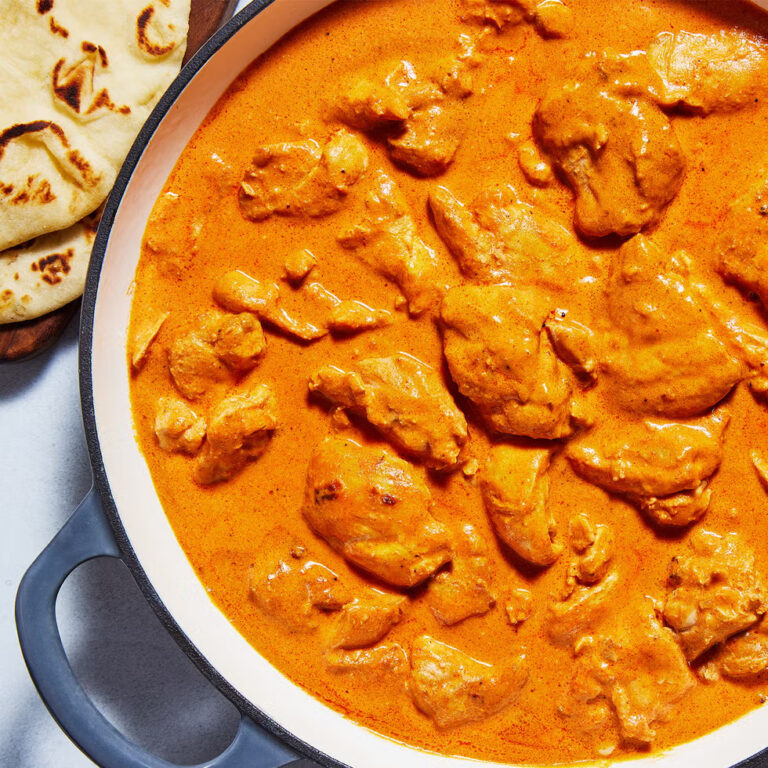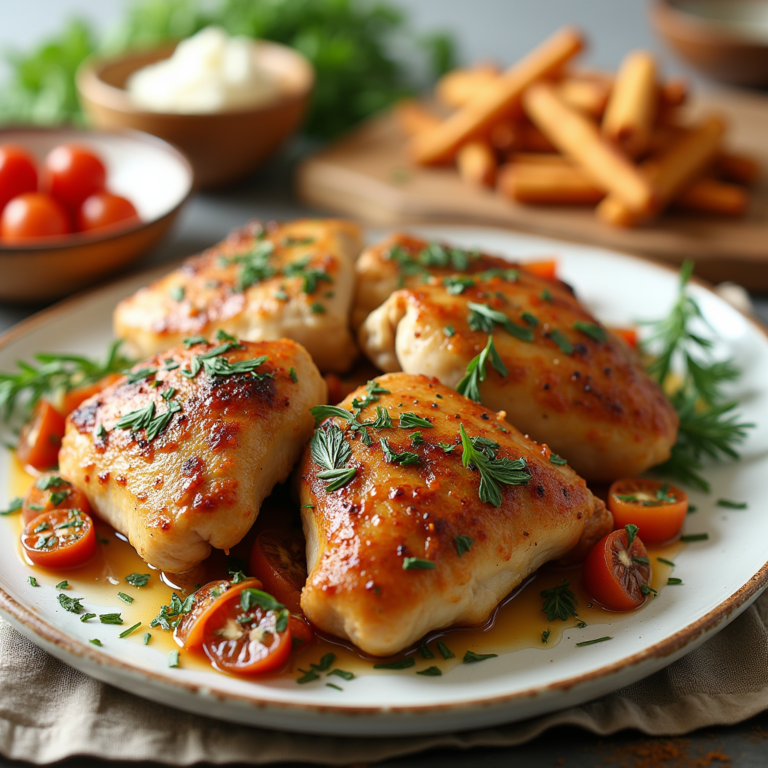Brine Rest
Brine Rest As a passionate home cook, I’ve always been fascinated by making moist, flavorful meats. It’s a mix of seasoning, cooking, and the science behind it. But one thing stands out: the brine rest.
The brine rest is often ignored by home cooks, but it’s a game-changer. Experts say a 2-hour brine rest is key for juicy, flavorful meat. In this article, we’ll explore the science and share pro tips to improve your cooking.
Brining is key in meat curing, but the magic happens during the brine rest. This short time lets salt and flavors deeply penetrate the meat. It locks in moisture and adds a rich flavor. Once you try it, you’ll never cook meat the old way again.
Unveiling the Secrets of Brine Rest
Resting brined meat for 2 hours is more than a suggestion. It’s a key step that brings out the best in your dishes. The brine rest importance is in letting the salt and brine fully soak into the meat. This makes the meat juicier and more flavorful.
Understand the Importance of Resting Brined Meat
During the brine rest, the meat’s proteins change. This helps them keep moisture better. This is why perfectly brined and rested meats are so tender and juicy.
Exploring the Science Behind Moisture Retention
The brine science behind this is interesting. The brine changes the meat’s protein structure. This makes the meat keep its moisture, even when cooked hot. So, your meat stays juicy and flavorful.
“Resting brined meat is the secret to achieving the perfect balance of flavor and texture in your dishes. It’s a small step that makes a big difference.”
So, when cooking a protein-rich meal, don’t forget the brine rest. This simple step will improve your cooking and impress your guests.
Brine Rest: The Game-Changer for Juicy Meats
Adding a brine rest to your cooking can change the game for juicy, tasty meats. It makes sure the meat soaks up the brine well. This keeps it moist and boosts its flavor and texture.
For a Thanksgiving turkey, or any other meat, brine rest is key. It makes the meat moist, tender, and juicy. This is thanks to the brine’s magic.
The science behind brine rest is straightforward yet powerful. Salt and seasonings in the brine get deep into the meat. They change its structure and keep moisture in. This makes your meats juicy and full of flavor, even after cooking.
| Meat | Recommended Brine Rest Duration | Key Benefits |
|---|---|---|
| Turkey | 24 hours for every 5 pounds | Ensures a moist, tender, and flavorful turkey |
| Venison | 2-4 hours | Tenderizes the lean meat and prevents dryness |
Using brine rest in your cooking can make your meats the juiciest and tastiest. It’s a simple trick that elevates your dishes. Your family and friends will love it.
“The recipe resulted in a moist and delicious turkey that pleased Thanksgiving guests. The brine rest was the key to the turkey’s juiciness.”
Mastering the Art of Brine Solution
Making the perfect brine solution is crucial for great brine rest results. You’ll need salt, sugar, and herbs and spices to create a tasty brine. These ingredients season the meat and help it keep juices during cooking.
Essential Ingredients for the Perfect Brine
- Salt: The base of any brine, salt seasons the meat and draws out moisture, enhancing texture and flavor.
- Sugar: A bit of sugar or honey adds sweetness, balancing saltiness and giving a caramelized taste.
- Herbs and Spices: Try different seasonings like smoked paprika, cumin, or chili flakes to tailor your brine’s flavor.
- Liquids: Adding liquids like apple juice, beer, or pickle juice brings depth and complexity to your brine.
Customizing Brine Ratios for Different Meats
Brining isn’t a one-size-fits-all affair. The right brine ratio depends on the meat type. Chicken breasts need a short brine of 30 minutes to 4 hours. But bigger cuts like turkey might soak for up to 24 hours. Try different recipes and times to find what works best for you.
| Meat Type | Brine Ratio (Salt:Water) | Brine Time |
|---|---|---|
| Chicken Breasts | 1:16 | 30 minutes to 4 hours |
| Turkey Breast | 1:10 | 6 to 24 hours |
Mastering brine solution is all about experimenting. Find the flavor and ratio that suits your meat best. With practice, you’ll get juicy and flavorful results every time.
Preparing for the Ultimate Brine Rest
Getting ready for a brine rest is key to success. Before you start, you need the right tools and follow some important steps. This will help your meat come out moist and full of flavor.
Choosing the Right Container
First, pick a good container. Look for something non-reactive like plastic, glass, or stainless steel. It should fit your meat and the brine. Don’t use aluminum or cast iron as they can ruin the taste.
Fully Submerging the Meat
Next, make sure your meat is fully covered in brine. This spreads the flavors and moisture evenly. If it floats, use a plate or something else to keep it down.
Refrigerating During the Rest
Keep the container cold, between 35°F and 40°F (1.7°C and 4.4°C). This stops bad bacteria and keeps your meat fresh. It’s important for food safety.
| Brine Rest Preparation Checklist |
|---|
Select a non-reactive container (plastic, glass, or stainless steel) Ensure the meat is fully submerged in the brine solution Refrigerate the container at 35°F to 40°F (1.7°C to 4.4°C) |
By following these steps, you’ll get a meat that’s full of flavor and moist. Remember, the brine rest is a big part of cooking. Taking your time here will make a big difference in the end.
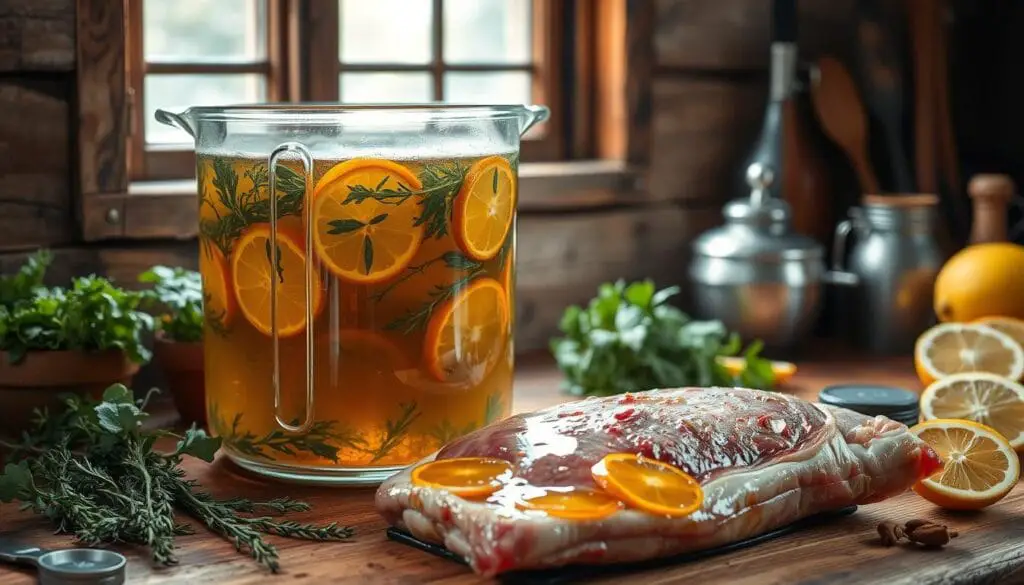
Timings and Techniques for Brine Rest
Ensuring your meat is perfectly seasoned and moist is key. The brine rest duration is crucial for this. The best brine rest time is 2 hours. This lets the brine fully soak into the meat, keeping it moist.
To get the best results, follow these easy steps:
- Submerge the meat in the brine solution, making sure it is fully covered.
- After the first hour, flip the meat over to ensure even distribution of the brine.
- Once the 2-hour brine rest is complete, remove the meat from the solution and pat it dry with paper towels.
Flipping the meat halfway through the brine rest helps. It ensures the brine spreads evenly. This is important for a balanced flavor and tender texture.
“The 2-hour brine rest is the secret to unlocking the full potential of your meats. It’s a simple technique that can make all the difference in the world.”
Remember, the right brine rest duration and technique are essential. They help keep your meats juicy and flavorful every time.
Meat Curing: The Brine Rest Connection
Preserving meat quality and flavor is key, and brine rest is vital. The brine solution keeps moisture in and adds flavor. It also makes cured meats last longer.
The brine curing process soaks meat in a saltwater mix. This lets it soak up flavors and preservatives. The brine rest, lasting about 2 hours, ensures the meat absorbs everything evenly.
The brine rest does more than keep meat moist. It’s a critical step in curing. The brine solution stops harmful bacteria, keeping meat fresh and tasty for longer.
| Brine Curing Process | Brine Rest Duration | Benefits |
|---|---|---|
| Submerging meat in saltwater solution | Typically, 2 hours | Helps retain moisture Develops unique flavor profile Extends shelf life |
Knowing how brine rest and meat curing work together is important. It helps make your cured meats moist, flavorful, and well-preserved. This way, you can enjoy them for a longer time.
Preserving Meat: The Role of Brine Rest
The brine rest is key in preserving meat. It makes the meat moister and more flavorful. It also stops harmful bacteria from growing, making the meat last longer.
Extending Shelf Life with Proper Brining
The brine solution has lots of salt. This salt makes it hard for bacteria to grow. So, the meat stays fresh and safe for longer.
By brining correctly, you can keep your meat fresh for days. This way, you can enjoy it at its best for a longer time.
| Brine Rest Duration | Estimated Shelf Life |
|---|---|
| 2 hours | 3-5 days |
| 4 hours | 5-7 days |
| 6 hours | 7-10 days |
The longer you brine, the longer the meat lasts. But don’t brine too long. It can make the meat too salty. Find the right balance for the best taste and preservation.
Proper storage and handling are also key. Keep the meat in a sealed container in the fridge. Eat it within the recommended time for the best taste and safety.
Brine Rest: Enhancing Flavor and Texture
The brine rest does more than just keep meat moist. It also boosts the flavor and texture. The brine solution adds a mix of salt, sugar, and spices. This lets the meat soak up these flavors fully.
The brine rest works wonders on chicken and steak too. The salt and spices get into the meat, making every bite taste amazing.
“The brine rest is a game-changer for anyone who wants to take their cooking to the next level. It’s an easy, affordable way to elevate the taste and texture of even the simplest ingredients.”
Try the brine rest in your kitchen. It’s perfect for quick dinners or fancy meals. The brine rest will make your dishes taste incredible.
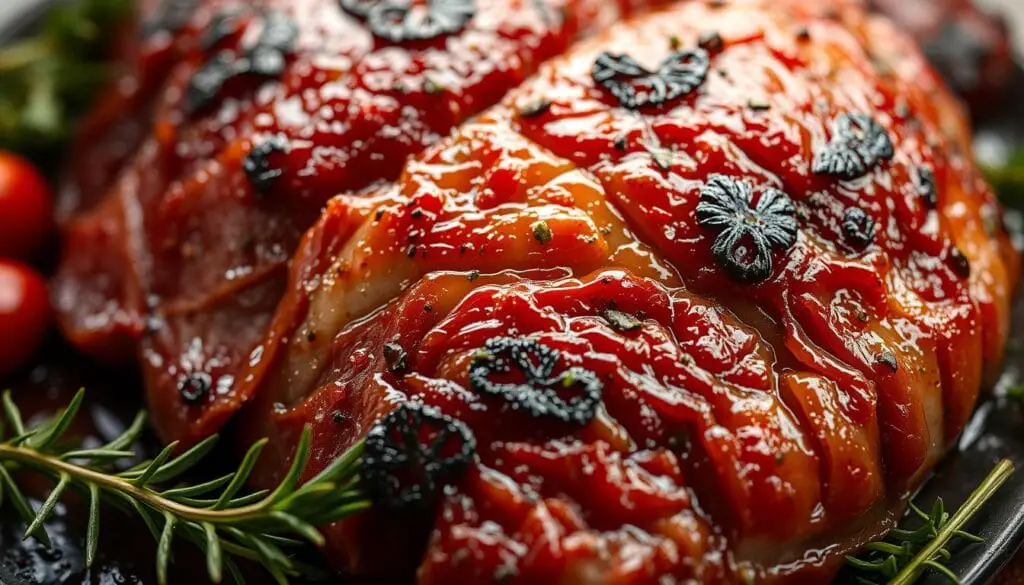
Safety Precautions for Brining and Resting Meat
When you’re brining and resting meat, safety comes first. It’s important to handle and store food properly. This way, your brine rest will be tasty and safe to eat. Here are the key steps to keep you and your family safe.
Maintain Proper Refrigeration Temperatures
Brining and resting meat need cool temperatures. Make sure your fridge is at 40°F (4°C) or lower. This stops harmful bacteria from growing, which can make you sick.
Avoid Cross-Contamination
It’s vital to stop raw meat from touching other foods. Use different cutting boards and utensils for each. Clean and sanitize all tools before and after use to avoid spreading germs.
Cook to Safe Internal Temperatures
After brining, cook the meat to the right temperature.
| Meat Type | Safe Internal Temperature |
|---|---|
| Beef | 145°F (63°C) |
| Chicken | 165°F (74°C) |
By taking these safety steps, your brine rest will be delicious and safe. Always put food safety first when cooking any meal.
Conclusion
The brine rest has changed the game in cooking. It helps keep meats moist and flavorful. This makes your dishes a hit with everyone.
Using a 2-hour brine rest can make a big difference. It works wonders for turkeys and steaks. This method improves taste and texture, and it also keeps food fresh longer.
Start your cooking journey with the brine rest in mind. It’s key for great food. With it, you’ll make dishes that everyone will love. So, get ready to impress with your cooking.
FAQ
Why is the 2-hour brine rest essential for achieving juicy and flavorful meats?
The 2-hour brine rest is key for meat to soak up the brine’s flavors. This makes the meat juicier and more flavorful.
What is the science behind the brine rest and its impact on moisture retention?
The brine changes the meat’s protein structure. This makes it keep more moisture, improving taste and texture.
What are the essential ingredients for creating the perfect brine solution?
Salt, sugar, and herbs and spices are must-haves for the brine. They season the meat and help it stay moist.
How can I customize the brine ratios based on the type of meat I’m working with?
Adjusting the brine’s ingredients based on the meat type can improve results. Tailor the brine to fit the meat’s needs.
What are the key steps in properly preparing for the brine rest?
Choose the right container and make sure the meat is fully covered in brine. Keep it refrigerated to stay safe.
What is the ideal brine rest duration, and how can I enhance the process?
A 2-hour brine rest is best for maximum moisture. Flipping the meat halfway through helps even out the brine.
How does the brine rest contribute to the meat curing process?
The brine rest is vital for curing meat. It preserves the meat, extends its shelf life, and adds flavor.
How does the brine rest help in preserving meat and extending its shelf life?
The brine solution stops harmful bacteria growth. This extends the meat’s shelf life. Proper brining is key for preservation.
What are the benefits of the brine rest in terms of enhancing the flavor and texture of the meat?
The brine rest improves moisture and flavor. It infuses the meat with balanced seasonings and makes it tender and juicy.
What are the key safety precautions to consider when brining and resting meat?
Keep meat refrigerated, avoid contamination, and cook it to safe temperatures. These steps are crucial for safety.

